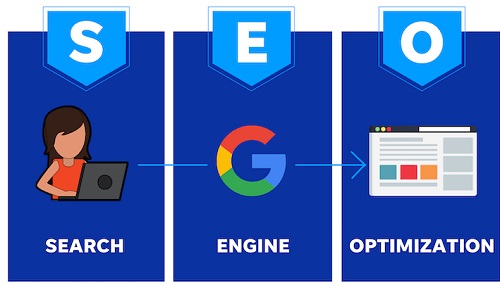SEO Considerations For Website Accessibility

While search engines might have no trouble accessing your material, can your audience? Since more than 15% of people worldwide have a handicap, using websites and the information and services they provide can be challenging.
The creation of websites that are functional and accessible to everyone should thus be a top priority for individuals who manage websites. In addition to producing interesting material, website owners need to make sure that it is understandable by search engines and available to all audience members.
By prioritizing a more person-first approach that keeps website accessibility at the forefront of SEO strategies, you can create web pages for both the humans that access online content, as well as the search engines that rank them, allowing site owners to reach their largest possible audience.
4 Four Principles of Accessibility
The Americans with Disabilities Act (ADA) guidelines for websites, which provide basic guidelines for producing material that is accessible to all, are only a starting point when it comes to designing content and landing pages with website accessibility in mind. Following the four main principles of the Web Content Accessibility Guidelines (WCAG) is essential for anyone wishing to design completely accessible websites.
These guidelines—often abbreviated as “POUR”—provide guidance on the actions that digital marketers should take to improve the accessibility of their online content.
1. Perceivable
How people engage with a website’s parts and features determines how that website is regarded. While for some people this may be visual, others may detect and navigate websites using sound or touch, such as through braille, tablets, other assistive technology, or screen readers that translate to sound. A website must be able to be comprehended by sound, sight, and touch in order to be properly perceived.
2. Operable
Users may effectively utilize buttons, controls, and other interactive components on an operational website. At the same time, everyone must be able to use the features of your website, even those who do not use a keyboard or mouse to browse the internet.
3. Understandable
A website that is simple to grasp enables people to understand the material with ease. This implies that visitors must be able to comprehend the content provided on your website, navigate it with ease to obtain the information they need, and use important elements like online forms and buttons.
4.Robust
Various technical tools, including web browsers, mobile browsers, and assistive technologies, must be supported by a functional website. Your website must continue to function even as technology changes.
SEO Best Practices To Improve Website Accessibility
There are several instances where SEO and website accessibility may coexist. Enhancing accessibility enhances user experience while offering your website a chance to rank higher in search results. Numerous SEO techniques might help you improve your website’s ranks and accessibility at the same time.
Page Titles And Headers
Page title tags and header markup tags provide context to help users (and search engines) identify what the webpage and content are about. Similar to how search engine crawlers utilize page titles and headings to navigate a website’s content, assistive technologies use page titles and headings to build an outline for users. For this reason, it is important to use dedicated heading tags rather than relying on bolded fonts and increased font size.
Links and Anchor Text
Anchor text is the visible text in a hyperlink that “anchors” two web pages together. SEO-friendly anchor text should be concise, relevant, and descriptive. SEO-optimized anchor text can also benefit keyboard-only users, colorblind users, or those who use accessibility technology such as screen readers or speech recognition software. Because users may rely on links to skim or navigate a page, links need to make sense outside of their larger context, and relevant link placement can help websites become more perceivable, operable, and robust by optimizing anchor texts.
Optimized links and anchor text should:
Use unique language when possible.
Avoid linking to anything longer than a sentence.
Consider URLs, as screen readers will read the full URL aloud. Avoid naked URLs whenever possible, and shorten URLs to be easy to understand if you must use one.
Avoid being too vague, such as using phrases like “click here,” “read more,” and “find more.”
Sitemaps
If you have a large, complex website, adding a sitemap helps ensure all of your website’s pages can be reached through some form of navigation. You can use a sitemap to provide specific information about various types of content on your pages, including video and image content. It also helps search engines like Google and regular users navigate through your site more efficiently.
Image Alt Text
Image alt text provides a descriptive text alternative for users with visual impairments. Assistive technologies such as screen readers read alt text aloud, which helps improve a website’s ability to be perceived and understood. Search engine crawlers also use image alt text to understand the context of images on your site. It is important to avoid keyword stuffing within alt text, as this does little to help your site’s visitors, and search engines can easily recognize this.
Transcriptions
Providing basic transcripts, which are text versions of audio and visual content, is essential for helping users with visual or hearing impairments understand the content of your website, overall improving your site’s ability to be perceived and understood. You can make transcriptions or captions on your site more accessible by formatting the information into lists, adding clarifying information, and indicating who is speaking.
How To Test Your Website’s Accessibility
The only way to be sure that website accessibility is actually being achieved is through testing it. By approaching your site and content from a user-specific mindset and by taking advantage of accessibility testing tools, site owners can ensure that the work they’ve put in to build an accessible website is useful to those who use it.
Accessibility Audit
In addition to an SEO audit, website owners can run an accessibility audit as well. Where an SEO audit gives insight as to how your content is driving traffic, performing, and ranking in search engines, an accessibility audit examines how user-friendly your website is for those with disabilities. Site owners can use tools such as WAVE and Tenon to run quick, automated audits before running more in-depth manual and user testing.
Screen Reader and Keyboard Testing
A manual test of how screen readers perceive a site can help site owners recognize whether those with visual impairments will be able to effectively use their site, or if they will have to go elsewhere for more accessibility-minded content. There are free and paid screen readers that site owners can utilize for testing, and it’s important to test with more than one screen reader, as different users will use different screen readers depending on their computer hardware and personal needs.
Keyboard testing is arguably one of the most important things to ensure, as many with disabilities rely exclusively on keyboards to navigate the web, and in some cases, they use modified keyboards that work better for their needs. Site owners should ensure that users can easily navigate all materials, pages, and services with a keyboard, and include visual cues to help people see where they’re at on the page
By manually testing content and site pages with a screen reader and keyboard, site owners can gain a more thorough understanding of how individuals with disabilities are accessing their content, and can ensure that necessary information and navigation points are clearly available and accessible to users.
User Testing
The final step of testing involves having actual users with disabilities or older participants try out your site for breaking points and accessibility issues. It’s also useful to have team members checking the site and content from an accessibility-focused standpoint.
However, real feedback from persons with disabilities will be the most thorough and give insight into how users are interacting with the site. Remember that individuals with the same handicap will each interact with the site in a unique way.
A successful website will put users and their various demands first. Site owners may reach the widest audience possible with their content and services by focusing on accessibility while also building websites that are simple for search engines to comprehend and rank.






